When the Sky Dances: The Astonishing Science of Starling Murmurations
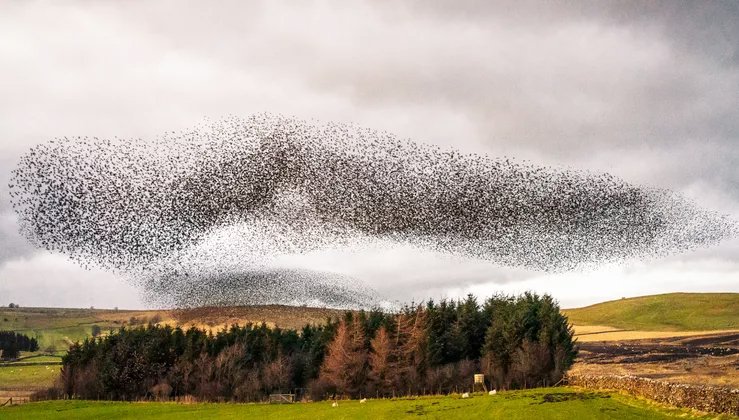
A murmuration of starlings is one of nature’s most mesmerizing spectacles. Learn what makes these birds move in perfect harmony and why scientists are still trying to unravel the mystery behind their breathtaking aerial ballets.
The Mesmerizing Movement and Mystery of Starling Murmurations
A murmuration—just the word itself evokes the gentle, rhythmic flutter of wings. But this natural event is far more dynamic than it sounds. At dusk, starlings—small, sleek birds with shimmering feathers tinted in purples and greens—gather by the thousands to perform one of nature’s most dazzling aerial displays. Unlike a simple flock of birds, a murmuration is a swirling, shape-shifting cloud, where every movement appears choreographed to perfection. The spectacle can stretch across the sky, captivating onlookers with its fluid formations that seem almost alive.
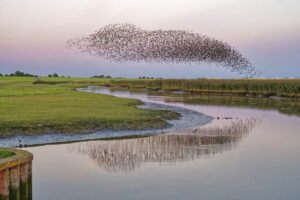
How Murmurations Work: A Collective Intelligence
The science behind these sky ballets is both simple and sophisticated. According to researchers, each starling follows a basic rule: mimic the movements of the seven closest birds. This rule creates a ripple effect as those birds copy their neighbors, allowing the entire group—sometimes numbering in the hundreds of thousands—to move as one cohesive unit. In 2010, scientists published a study in the Proceedings of the National Academy of Sciences, suggesting that the coordination could be explained through principles of physics—specifically, scale-free correlation. This theory draws parallels between murmurations and how particles behave when magnetized, implying the birds adjust their velocity and direction in near-instantaneous harmony with their neighbors. Sound waves may also play a role in helping birds synchronize.
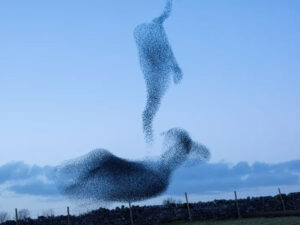
Still, this phenomenon is far from fully understood. Despite high-speed cameras, computational models, and expert analysis from biologists, engineers, and physicists, the exact mechanism of this flawless unity remains elusive.
Why Do Starlings Murmurate?
While the spectacle is undeniably beautiful, it serves several potential survival functions:
Predator Defense: Much like schools of fish, murmurations help confuse predators such as falcons or hawks. The constantly shifting patterns make it difficult for a predator to target a single bird, significantly reducing individual risk.
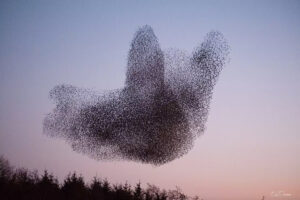
Thermal Benefits: In colder months, starlings may form large murmurations to draw attention to a communal roosting site. The more birds that gather, the warmer the roost becomes, offering insulation through sheer numbers.
Information Sharing: Another theory, known as the information center hypothesis, suggests murmurations help birds share knowledge about good feeding areas. As food becomes scarce, cooperation may increase a group’s survival odds. Interestingly, though murmurations can occur year-round, they’re most commonly observed during late summer through winter, especially at sundown, as birds return to roost.
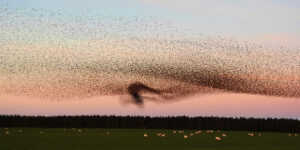
Where Can You See Murmurations?
While murmurations are most famously observed in the United Kingdom, they’ve become increasingly common in North America. That’s thanks to a curious historical twist: starlings were introduced to the United States in the 1890s by Shakespeare enthusiasts hoping to populate the New World with every bird mentioned in his works (despite the starling’s one brief mention in Henry IV). Today, over 150 million European starlings live in the U.S., often regarded as pests due to their aggressive colonization and competition with native birds. Yet their murmurations continue to inspire awe across continents. Whether in an English field or an American prairie, the sound of tens of thousands of wings beating in unison—like a murmured chorus—announces the approach of this living, moving artwork in the sky.





